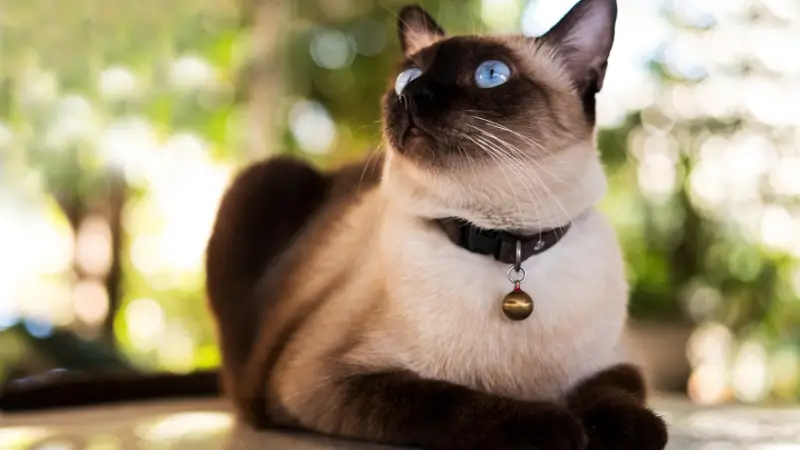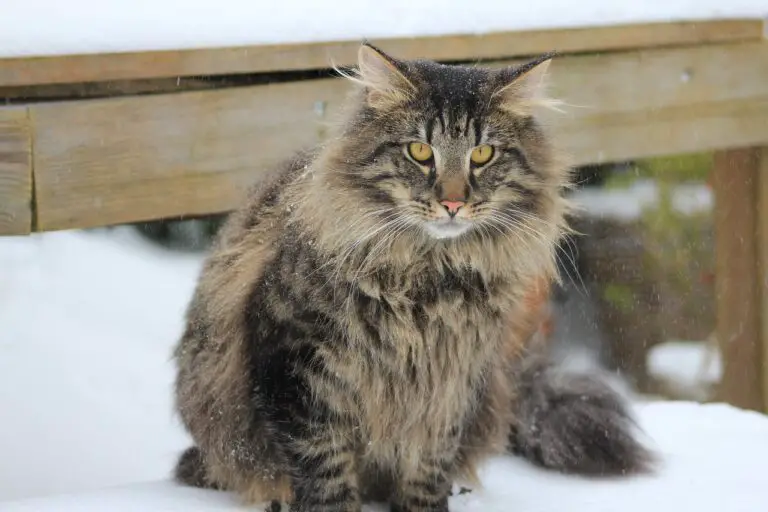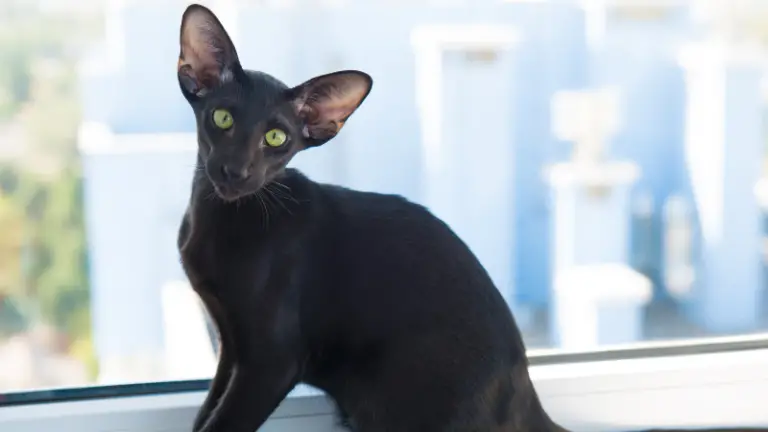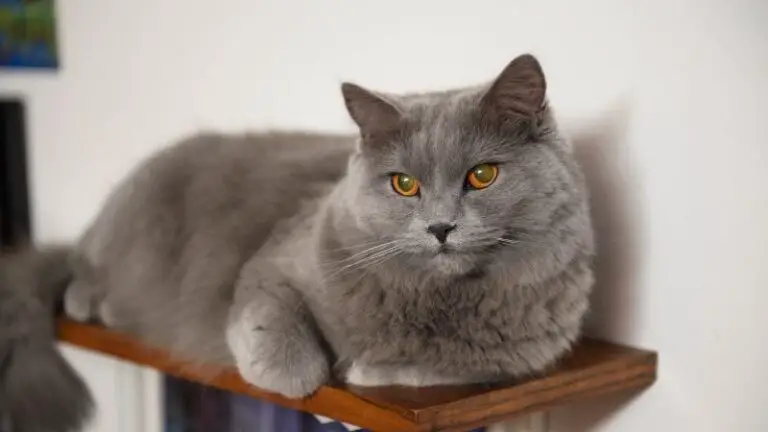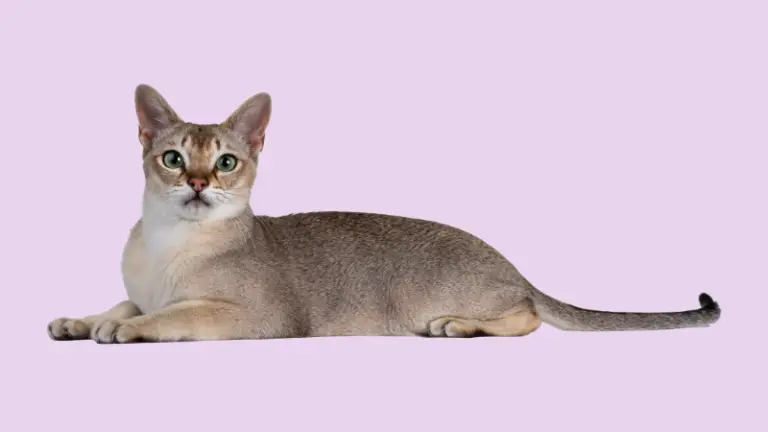SIAMESE CAT PERSONALITY AND BREED (ALL YOU NEED TO KNOW)
Would you like to know more about the Siamese cat personality?
The Siamese are among the best known and most particular cat breeds. They are characterized by a short and shiny coat and markings on the tips, which means the areas on the body’s extremities are darker.
At a glance, the Siamese cat requires minimal brushing, is very affectionate, with an extroverted character, and with the peculiarity of being exceptionally vocal.
Let’s know more about the Siamese cat personality.
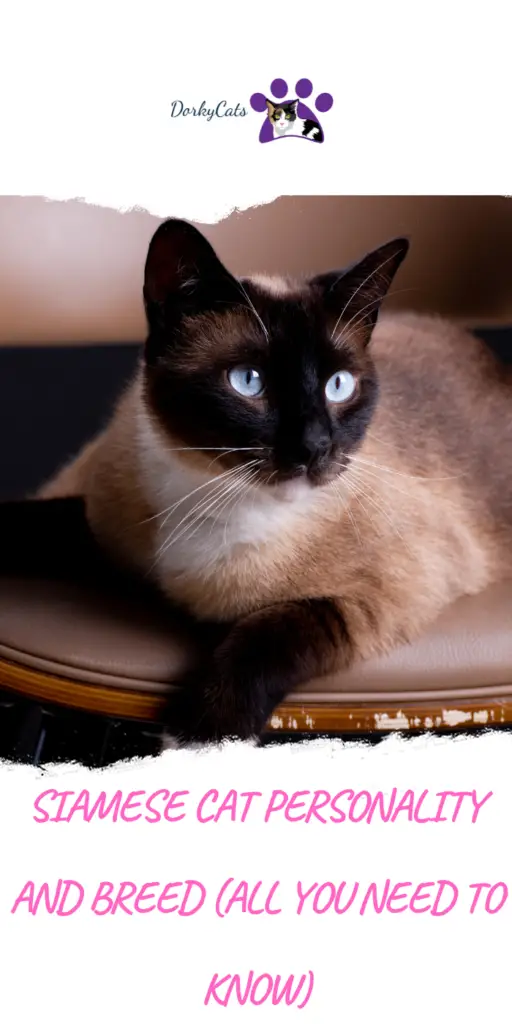
WHAT IS THE SIAMESE CAT GENERAL ASPECT AND SIZE?
From the imperial courts to the living rooms of the Anglo-Saxon aristocracy, there is not an environment that the Siamese, one of the most unmistakable cats, hasn’t conquered.
It has unmistakable spots on the tips, which have darker colors than the rest of the body. The vivid blue eyes are present in all Siamese cat varieties, independently of the colors of the tips.
The Siamese cat is well-balanced thanks to its long and narrow tail.
CHARACTERISTICS AND APPEARANCE OF THE SIAMESE CAT
| Characteristic | Description | Notes |
|---|---|---|
| In summary | The coloring on the tips develops with growth | The kittens are born white |
| Personality | Dominant but affectionate, it requires attention. He is not a very quiet companion | |
| Appearance | The color changes with age, while the shades on the hips become prominent | It is particularly noticeable in dark varieties like the seal point |
| In the house | An athletic cat. He loves climbing indoors and on the outside. The purchase of a climbing tree is recommended | |
| Behavior | Sexually precocious, queens have a particularly sonorous call | |
| Grooming | Very simple, it requires little more than some caresses | |
| Most common health problems | 1. Crooked and bent tails have now been eliminated in those cats born in modern lineages. 2. They are at risk of respiratory infections. 3. The eyes tend to strabismus | He can suffer from diarrhea caused by intolerance to cow’s milk |
| Size | Medium, up to 4.5 kg | |
| Ears | Large, well-spaced, and wide at the attachment and pointed | |
| Eyes | Almond-shaped, blue | |
| Head | Triangular, longer than wide | |
| Paws | Long and thin; the rear ones are more longer than the anterior ones; small and oval feet. | |
| Coat | Short, shiny, close to the body and almost devoid of undercoat. | |
| Allowed Colors | Siamese point: lilac, blue, brown, tan; color point: orange, cream, and all tortie varieties. |
The litters are very numerous: deliveries from 9 puppies are not uncommon.
The Siamese has very expressive eyes. His lively and eloquent gaze can easily communicate their moods to humans.
WHAT IS THE HISTORY OF THE SIAMESE CAT?
The appearance of the Siamese has changed dramatically following breeding in the West. This is because they were imported from Thailand in the second half of the last century when the head of this breed was much rounder than today.
This older type is recreating itself in the West as a distinct breed, which does not have a triangular muzzle and the angular features of modern display lines.
Another change, not accepted by all, concerned the increase in the number of colors
recognized by some exhibition-promoting organizations. In addition, the versions non-traditional such as red points, are still contested or questioned by some breeders.
WHAT IS THE ORIGIN OF THE SIAMESE CAT BREED?
The origins of these magnificent cats are imprinted in the name they bear. The Siamese cat is native to Thailand, in the area known until 1939 as the Kingdom of Siam, and sinks its roots in the folds of time.
In the Tamra Maew (the Book of Feline Poems), preserved at the National Library of Bangkok, which was discovered among the remains of the ancient capital Ayudha, there is a whole chapter dedicated to the origins of the Siamese.
However, in his home country, the Siamese was not appreciated or favored by the ordinary people, while entire lineages of noble and royal made these cats their most precious confidant.
THE XVII CENTURY HISTORY
Around the XVIII century, in Russia was found an ancient engraving depicting a similar cat in appearance to the Siamese, but only at the turn of the nineteenth and the twentieth century did this breed appears for the first time in Europe.
The merit belongs to the kin of Siam, who gave away a couple of gorgeous Siamese cats to the British consul stationed in Bangkok.
At the first cat shows, the Siamese was not a great success, but during the exhibition at the Crystal Palace in London in 1881, it won a post in the heart of cat lovers of the time; first of all, the organizer of the event, Harrison Weir.
THE MODERN SIAMESE HISTORY (twentieth century)
In 1889 they began to draw up the first standards, and in 1902 the first dedicated club to the Siamese breed was born. However, success did not stop in the Old Continent; in 1909, a similar association was also founded in the United States.
The selective programs continued until they got a cat very different from the original specimens. In this latest specimen, the body was more streamlined, and the muzzle was more pointed, while the color range of the coat grew considerably.
Between the 50s and 60s of the last century, the Siamese reached the pinnacle of fame worldwide, especially in America, where this cat also conquered the big screen in a short time.
It was so successful that Hollywood couldn’t help but offer the Siamese cat the part of the protagonist in a series of films famous for those years.
WHAT ARE THE MOST FAMOUS SIAMESE CATS?
There are many Siamese cats known to belong to famous people or people of high lineage. For example, although not many know it, queen Elizabeth of England gave one as a gift to Prince Philip, Duke of Edinburgh, as a wedding gift, and James Dean owned one, given to him by the famous actress Elizabeth Taylor.
SIAMESE CAT PERSONALITY TRAITS
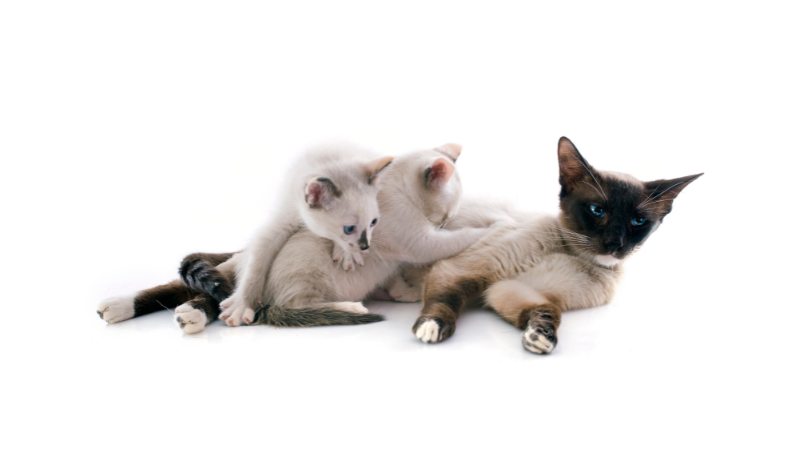
The Siamese is a sexually precocious breed, so if you have a young queen, be prepared to sterilize her very soon, perhaps between three or four months. Removing the ovaries will avoid the risk of unsolicited litters.
It is also appropriate for domestic peace since these cats meow in a noisy and pushy way when looking for a mate. The Siamese cat could awake you and your neighbors when they are in heat.
Usually, for Siamese females, it is common to remove the ovaries with an incision on the abdomen instead of on the flanks.
In this way, you will avoid that in that area, the mantle becomes too dark, a phenomenon that occurs because that body part cools down temporarily as the hair grows back from the shaving that was necessary for the operation.
Cheerful and playful, the Siamese is an ideal companion for children. But, if you like the idea of bringing him outdoors, know it’s easy to train him to use the leash.
HOW IS THE SIAMESE CAT STANDING OUT FROM OTHER BREEDS?
The Siamese stands out from the other cat breeds for its rare sensitivity and total dedication to its human. He is a very affectionate cat to the point of becoming possessive towards the person he chooses as a mate in life.
He follows the owner everywhere and does not lose the opportunity to express all of his
love. Extroverted and very communicative, the Siamese has an exuberant and lively temperament.
Yet, behind those elegant and somewhat haughty ways hides an eternally playful nature. He is brilliant and does not always like to be commanded.
This is not a breed that is suitable for everyone because it requires continuous attention and prefers to stay away from children since they are too noisy for its aristocratic nature. In addition, they like to have long conversations with their owners and often complain about something.
It has a dominant disposition for which it lives well only with those animals willing to allow themselves to be subdued, while it is highly distrustful with strangers.
CURIOSITIES ABOUT THE SIAMESE CATS
Here are some curiosities about Siamese cats:
- To affirm that the first impression of the Western world on the Siamese has not been positive is a euphemism. As soon as the Europeans saw a specimen of this breed, they called it a “nightmare” cat for the unusual coloring of the mantle.
- Never let your Siamese miss the dry food explicitly designed to keep the teeth clean
- and in good health. The Siamese tends to suffer a lot of tartar in the teeth and gingivitis, ailments that, if neglected, can damage their health.
- The Siamese cats never get tired of playing with their owners.
- The light coat becomes darker in adulthood.
- If you are going to breed your Siamese cat, get some good caps for the ears because, during the estrus, the meow of these cats gets especially keen up to remember the powerful voice of an opera singer!
- What determines the dark spots is a particular active enzyme active only at the body’s extremities.
- The Siamese is a robust cat who gets sick very rarely.
- Always check your Siamese after he has eaten to see that he does not have a dirty nose. Try to prevent dirty food particles from getting into the pores and giving rise to natural acne, which is rather annoying for the poor kitten.
- The Siamese knows how to perform reckless acrobatics tricks with proverbial elegance.
▷ Thai, the traditional Siamese, is well known also as Applehead. The name, which means “apple head,” refers to the rounded shape of the head.
HOW TO CARE FOR AND FEED THE SIAMESE CAT
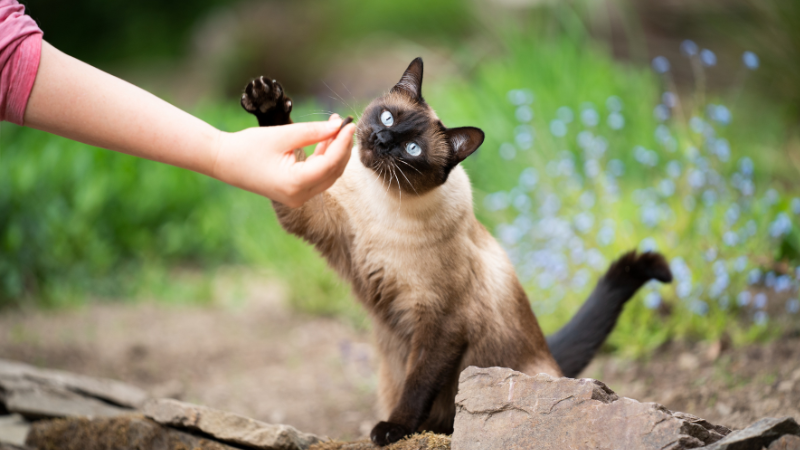
As a short-haired breed, the Siamese does not need frequent brushing. However, a single brush every fortnight with a soft brush or a toothed comb is an excellent remedy to keep the mantle in shape and to verify the absence of parasites.
A moist deerskin cloth used once a day will keep the hair shiny.
In general, a diet that consists of top-quality food is perfect for this cat; for puppies, however, it is better to have a diet based on freshly prepared food, such as chicken, peaches, and well-cooked rice.
THE PIGMENTATION OF THE SIAMESE HAIR
The Siamese would actually be a dark cat; the typical point coloring, which contributed to making the cat so famous and appreciated worldwide, is linked to a mutation of the gene responsible for coat pigmentation.
The mutated gene acts on the coloring basic by limiting the number of pigments that remain unchanged in the most exposed areas of the body, such as the muzzle, tail, and legs, giving rise to the typical tan color.
This gene affects the same way the color of the eyes, which, in fact, on a dark coat, should be brown or green, but in the case of the Siamese, they are blue.
FREQUENTLY ASKED QUESTIONS
What are the Siamese cat personality problems?
Siamese cats are very affectionate to the person they consider their human; they require constant attention, and if ignored, they can develop behavioral and personality problems.
They can get aggressive, anxious, and even depressed. So if you get a Siamese, be prepared to have a demanding child in your house.
What is the Siamese cat price?
In general, Siamese cats costs between $400 and $1000. However, the price varies depending on the purity of the breed, the age, and the breeder.
What is the Siamese cat’s lifespan?
Siamese cats can live up to 15 years. The general care, environment, and food quality can be good ways to prolong his life expectancies.
What is the Siamese cat’s personality with other cats?
The Siamese cat is very demanding and has a dominating personality, and he can sometimes get very territorial. So the other cats must be willing to be dominated and respect “his majesty” the Siamese cat.
This doesn’t mean that the Siamese cat cannot get along with other cats, but you should be careful about matching your pets. Perhaps, getting a pair of Siamese cats is a better choice, so they have a friend and have more chances to get along with each other.
What is the Siamese cat’s personality with other dogs?
The Siamese cat could get along with dogs as long as the dog is careful to respect the cat’s space, and can put up with his dominating attitude.
Do Siamese cats have an attitude?
Siamese cats can have an attitude when they need something or believe they are not getting enough attention.
Do Siamese cats get mean?
Siamese cats can get mean if they feel their space is not respected or if unfamiliar pets are entering the house. They can get also mean when they become jealous for any reason.
Do Siamese cats get jealous?
Siamese cats get jealous if they are not getting enough attention. For example, if they are neglected or if you are not listening to his demands, Siamese can show signs of jealousy, such as aggression, stress, or other symptoms.

